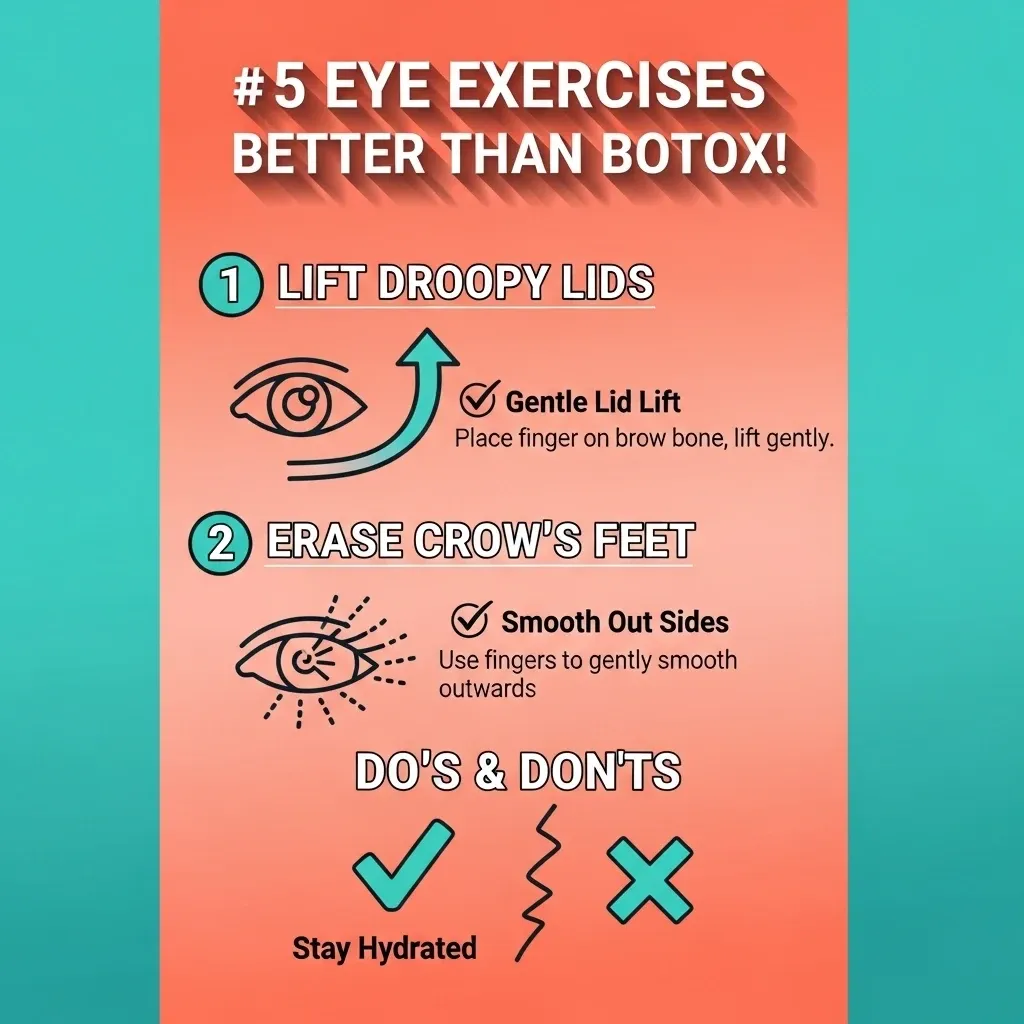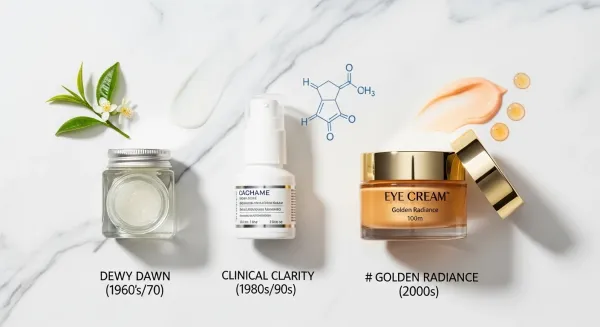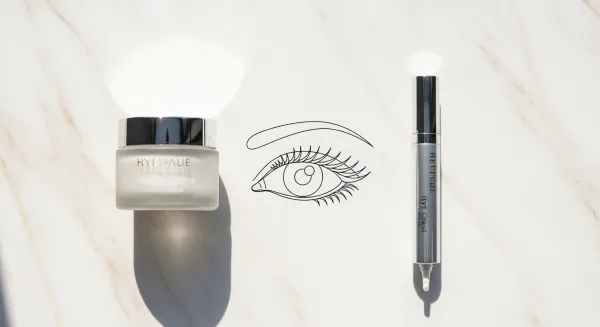Can Eye Exercises Reduce Wrinkles and Sagging? Here’s the Straight Answer (Plus a 5-Minute Routine)
Can eye exercises reduce wrinkles and sagging? Learn a 5-minute routine, safety tips, and smart pairings for real, subtle results.

Can Eye Exercises Reduce Wrinkles and Sagging? Short answer: they can help a little with tone and puffiness if you do them right and consistently—but they won’t erase deep lines on their own.
The big opportunity is using them as one pillar in a smart routine (skincare + SPF + lifestyle) instead of hoping for miracles.
Why this post is different: most pages say a qualified “yes,” then jump into how-tos. They rarely compare options side-by-side, set timelines, or flag when not to do them. We’ll fill those gaps with a simple, evidence-aware playbook and realistic expectations.
The 10-Second Verdict
- Do they help? For many women, yes—subtle softening of fine lines and less puffiness when practiced gently and daily.
- What they won’t do: Reverse sun damage, rebuild lost collagen, or replace procedures.
- Best use: Pair with SPF, smart actives, and healthy habits for a visible, gradual boost.
This “subtle, not dramatic” framing mirrors what winning pages imply but rarely say bluntly. We’ll be the site that sets honest expectations.

The Science—Explained Simply (No Jargon, No Hype)
- Muscle toning: You have tiny muscles around your eyes (think: orbicularis oculi). Gentle, controlled contractions can improve muscle tone under the skin’s surface.
- Circulation & lymph: Movement can nudge blood flow and lymphatic drainage, which may reduce that “puffy morning” look.
What do experts say?
- Harvard Health sums it up well: face yoga may help appearance for some, but evidence is still limited and technique matters. (Harvard Health overview)
- A small Northwestern University study found middle-aged women who did a facial exercise program looked modestly younger after 20 weeks (small sample, promising—still not a cure-all). (Northwestern summary)
- The American Academy of Dermatology stresses realistic expectations and cautions against harsh pulling on delicate eye skin. (AAD perspective)
Bottom line: Plausible mechanisms, some early support, but not robust clinical proof yet. That honesty builds trust—and it’s the gap we’ll own.
What the Internet Gets Wrong (and What We’ll Do Better)
Most top pages teach exercises but skip four things you actually need:
- When to do them relative to skincare,
- What it should feel like,
- How long until you see anything,
- Contraindications (e.g., fresh injectables, irritation).
We’ll cover all four clearly below.
Before You Start: 3 Golden Rules
- Use slip. Work over a dab of eye cream or lightweight oil so you never drag dry skin.
- Gentle > force. You want control and slow movements, not stretching.
- Consistency wins. 2–5 minutes daily beats a 20-minute marathon once a week.
Want help picking the right product layer? Start here: Eye care guide—what works, what doesn’t.

Your 5-Minute, Problem-Solving Routine (Follow-Along)
Each mini-move targets a common concern. Do them slowly in front of a mirror. Breathe.
1) Corner Lift for Crow’s Feet (1 minute)
- Place index fingers at the outer corners of your eyes, anchoring skin without dragging.
- Gently “smile” with just the lower eyelids (tiny squint) while resisting with your fingertips.
- Hold 3 seconds, relax 3 seconds. Repeat 10 times.
Feel this: a soft squeeze at the outer eye, not a forehead scrunch. (This maps to the eye-squeezing muscle without pulling skin.)
2) Brow Lifter for Hooded Lids (1 minute)
- Place three fingers above each brow. Press downward lightly.
- Try to lift your brows up into your fingers (don’t wrinkle the forehead hard—focus on controlled tension).
- Hold 5 seconds, relax 5 seconds. Repeat 6–8 times.
Goal: teach your brow elevators to work without recruiting the whole forehead.
3) Lower-Lid Squeeze for Under-Eye Creasing (45 seconds)
- Look straight ahead.
- Without moving the upper lid, gently lift the lower eyelid upward toward the pupil (tiny squeeze).
- Hold 2 seconds, release 2 seconds. Repeat 12–15 times.
Feel this: a micro-lift under the eye—no tugging. (Helps tone the lower lid area.)
4) Temple Glide for Tension Lines (45 seconds)
- With lotion on, plant fingers at the outer eye corner.
- Glide lightly up and back toward the temples along the bone (feather-light).
- 10 slow passes each side.
Why: encourages lymph movement and reduces “end-of-day” crinkles.
5) De-Puffing Drainage Sweep (50 seconds)
- Tap gently from the inner corner under the eye to the outer corner, then down in front of the ear and along the neck.
- Repeat 3–4 rounds with feather-light touch.
Tip: this is about flow, not strength. Keep it soft.
Want a deeper dive on facial workouts? Bookmark our guide to facial exercises for anti-aging.
Safety First: Don’t Create New Lines While Fixing Old Ones
Do’s vs Don’ts (Quick Table)
| Do | Why it matters | Don’t | Why it backfires |
|---|---|---|---|
| Work over cream/oil | Reduces friction | Pull dry skin | Micro-tears, irritation |
| Use light, steady pressure | Trains muscles, protects skin | Yank or stretch | Can worsen lines |
| Go slow, mirror-guided | Keeps form clean | Rush through | Recruits wrong muscles |
| Stop if it hurts | Pain ≠ progress | Push through pain | Inflammation, redness |
| Clean hands & tools | Eye area is delicate | Touch with dirty hands | Irritation, breakouts |
Skip exercises temporarily if: you had Botox/fillers recently (ask your injector, many suggest waiting 2–4 weeks), you have active irritation/dermatitis, or you had recent eye surgery.
For product pairing and technique guardrails, see: eye wrinkles that go way beyond eye cream.
Where Exercises Fit vs. Other Options (Know Your Levers)
| Option | Best For | Evidence/Track Record | Cost | Time/Week | Risk |
|---|---|---|---|---|---|
| Eye exercises | Tone, mild lift, puffiness | Mixed, small studies; promising for subtle change | Free | 20–35 min | Low if gentle |
| SPF daily | Preventing new lines & sag | Strong, decades of data | Low | 0 | Low |
| Retinol/retinal (eye-safe) | Texture, fine lines over time | Strong for collagen support | Low–Med | 0 | Mild irritation possible |
| Caffeine eye creams | Morning puffiness | Moderate (fluid shift) | Low–Med | 0 | Low |
| Microcurrent tools | Temporary lift/tone | Growing but still limited | Med–High | 30–60 min | Low–Med |
| Procedures | Etched lines, laxity | Strong (varies by procedure) | High | Varies | Medical setting |
Want to layer like a pro? Start with retinol for eyes (how to avoid irritation), add a smart AM protect step with sunscreen + makeup, and use caffeine eye creams—do they actually work?.
The 5-Minute Daily Game Plan (Save this)
Morning (2 minutes)
- De-puffing sweep (1 minute)
- Corner lift (1 minute)
- Vitamin C → moisturizer → broad-spectrum SPF (more below)
Evening (3 minutes)
- Brow lifter (1 minute)
- Lower-lid squeezes (1 minute)
- Temple glide (1 minute)
- If using a retinoid, apply after cleansing on dry skin; buffer with a bland moisturizer if needed.
Build your full routine with our ultimate anti-aging eye creams guide.
Tips (Made for EU/UK Readers—Hello Berlin 👋)
- UVA matters year-round. Even when skies are grey in Berlin or London, UVA still penetrates clouds and glass. In the EU, look for the UVA-in-a-circle mark on sunscreens to confirm broad-spectrum protection.
- Winter dryness is real. Radiators + low humidity = tighter, flakier eye skin. Add a humidifier, apply a richer eye moisturizer at night, and keep exercises extra gentle.
- Pollen & urban dust: In spring, eyes can be puffy from allergens; focus on the drainage moves and clean hands before any tapping.
- Reapplication reality: If you commute or work by a window, top up SPF at midday with a mineral powder or mist (yes, it’s doable). See our quick guide: sunscreen & anti-aging benefits.
Myth vs Fact (Reset Your Expectations)
- Myth: Eye exercises erase deep wrinkles.
Fact: They may soften fine lines by improving tone, but they won’t rebuild lost collagen or undo sun damage. Manage for subtle, steady wins. - Myth: More pressure = faster results.
Fact: More pressure = more pulling. Go slow and light. - Myth: Results show in a few days.
Fact: De-puffing can look better fast; muscle tone changes need 4–8+ weeks of daily practice.
Want the bigger picture on skin aging levers? Harvard and the AAD both emphasize sun, time, and habits over hacks. (Harvard Health, AAD overview)
FAQ (Quick, Clear, and Practical)
1) How long before I see anything?
Most women notice less puffiness quickly. For tone and fine-line softening, plan on 4–8 weeks of daily work. Keep it gentle and consistent. For “what to stack” while you wait, see our eye care guide.
2) Do I do eye exercises before or after skincare?
During or right after applying an eye cream or light oil so your fingers glide. If you’re using retinol at night, do exercises first, then apply retinol last (buffer with moisturizer if sensitive). Read: retinol for eyes without irritation.
3) Can eye exercises make wrinkles worse?
Yes—if you pull, tug, or overdo it. Follow the “Do vs Don’t” table above, keep touch feather-light, and stop if anything feels rough. New to this? Start with the de-puffing sweep.
4) What if I have Botox or fillers?
Wait until your injector gives the green light (many advise 2–4 weeks). Avoid aggressive moves over treated areas early on. If in doubt, skip and focus on SPF + gentle skincare that week.
5) Are there better quick wins than exercises?
For prevention and everyday payoff: daily SPF, smart actives (retinoids, vitamin C), and sleep/hydration. Pair them with our 5-minute routine for compounding gains. Start with caffeine eye creams—what actually works and sunscreen & anti-aging benefits.
The Takeaway
Eye exercises are a useful tool—not a magic wand. Use them to nudge tone, improve puffiness, and reconnect with your face. Then stack the proven basics: SPF every day, smart actives at night, and real rest. That’s the compounding strategy.
Pro tip: Pin this routine to your mirror and set a 5-minute timer. Tiny, daily reps beat “I’ll start next month” every time. And yes, we’ll continue to update this guide as better studies land (we want evidence as much as you do).




